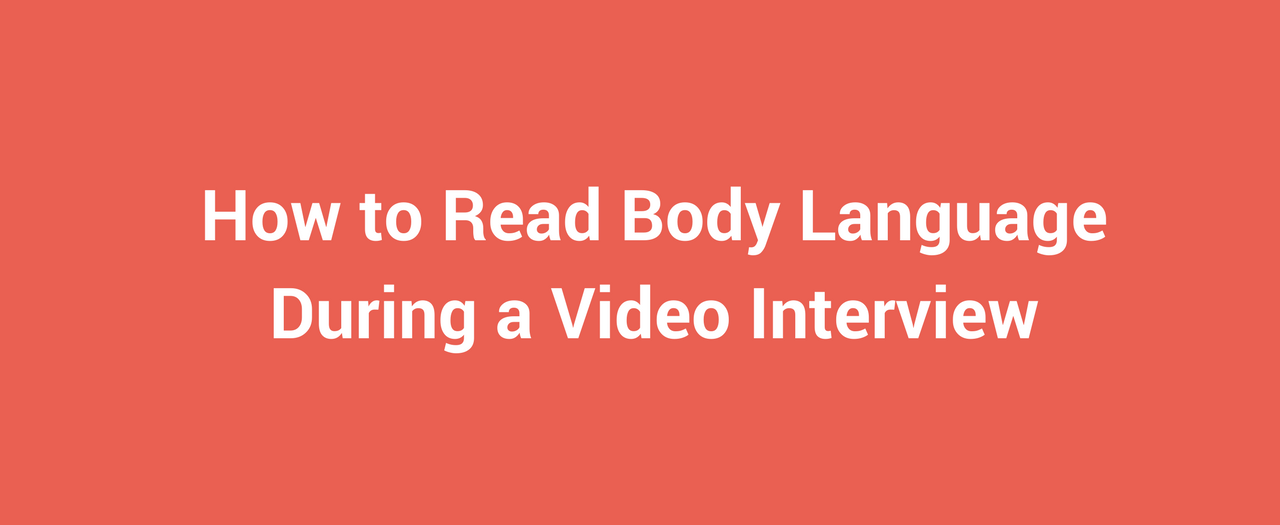While the responses a candidate delivers during an interview matter, their non-verbal cues also help to paint a picture about who this individual is as a professional — especially during video interviews.
Decoding a candidate’s body language and coupling this knowledge with what you gain from their verbal replies allows you to gather crucial insight about whether this person might be an appropriate fit for your open role.
A recent survey by CareerBuilder shed light on several red flags to be aware of, as far as body language is concerned. Here is the hidden meaning behind these non-verbal signs and signals:
-
Posture
Our posture can speak volumes about how we feel about a conversation. When we’re fascinated by what the other person is saying, we tend to lean in. When we’re disengaged, we’re more likely to lean back in our chairs.
When you’re watching candidates’ video interviews, observe their posture. You shouldn’t see people leaned all the way back in their chairs, with their feet on the desk. This can be a sign they’re either bored by the topics at hand, or are feeling far too comfortable with their chances of landing the job and aren’t taking the process seriously.
-
Fiddling with hair, nails, or jewelry.
As common nervous habits, you might see applicants tucking hair behind ears, twisting rings around their fingers, playing with necklaces, or picking at their nails. They may be unaware of these tics, which can signal a lack of self-confidence.
These issues may go away should this person land the job and become more comfortable with you. However, they could be damaging if the individual is in a client-facing role and will continue to find themselves in high-pressure situations where they need to make a positive impact right away.
-
Poor eye contact.
While they may not be sitting across from you having a conversation, eye contact is still important during a video interview. If you notice a person rolls their eyes as they speak or allows their gaze to dart around the room, you have to wonder what they’d be like if brought into a meeting or asked to give a presentation.
Strong, steady eye contact is key. At the same time, a person who just stares into the camera can appear menacing, so you want someone who is able to maintain good eye contact in a non-threatening way.
-
Failure to smile.
A job interview should be taken seriously, of course, but that doesn’t mean that smiling is forbidden. You want a candidate who seems genuinely excited and enthusiastic about the opportunity in front of them.
One way to determine this is by looking for someone who answers their video interview questions with a warm, natural smile.
-
Fidgeting in their seat.
Much like how playing with your hair, nails, or jewelry is distracting, moving around in your seat detracts from the power of your words.
[tweet “Crossed arms can make candidates look standoffish.”]
If you notice a candidate delivers a response while twirling in their chair, take this nonverbal behavior into consideration. Think about the impression they’d give off should you bring them on client meetings or ask them to interface with high-powered executives within your company.
-
Crossed arms.
This subtle gesture makes a job candidate look standoffish. Coupled with a lack of smile, it’s a negative body language cue that may indicate the person isn’t actually that interested in the open position.
Crossed arms can also signal a person expressing frustration. People who typically cross their arms in this manner usually do it for self-comfort. Whatever the reasoning, crossing your arms during a video interview is almost always a signal that something is off.
-
Using too many hand gestures.
Many people talk with their hands without fully realizing it, but going overboard with hand gestures makes it hard to focus on the message the person is delivering. A few hand motions for emphasis every now and then is acceptable, but it shouldn’t become distracting.
Learning how to decode body language makes the video interview process more informative for those looking to add to their team. Watch out for these interview red flags and you’ll be able to make a thoughtful hiring decision that ensures this new team member is part of your staff for the long-haul.
—
What other ways can you read body language during an interview? Let us know in the comments section!











